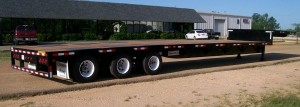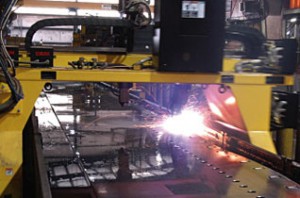In the structural engineering world, camber is known as having a slight arc or bend induced in a beam. Positive camber is when there is a hump in the center of the beam, with its shape resembling a frown. Typically, positive camber is seen in steel beams or trusses used to support flat roofs or decks that carry large loads over large spans where columns are not desired. Negative camber is when there is a sag in the beam, with its shape resembling a smile. Sag is indicative of an overloaded beam and is not typically allowed or purposely used in structural applications. You might find some cantilevered beams do have their ends curved upwards ever so slightly to provide more tensile strength at the edge of the overhang when loaded. Cambering beams allow smaller beams to be used in place of larger beams to support the same load. This results in lighter construction, and more cost savings. While cambered beams are mostly associated with building design, it’s not rare to find a version of cambered beams used in flatbed truck trailer chassis.

Your typical cambered steel beam is produced by rolling or pressing camber into a straight beam. Design standards put limitations on the allowable depth and length of beams eligible for use as a cambered member for building construction, but they can also be produced quickly and in large quantities. Beams used in flatbed trailer designs take more time to produce because they are fabricated from steel plates and welded together, similar to “built-up” sections. While the flange plates may be rolled or heated to retain a slight curvature, the actual web of the beam is plasma cut to a complex geometry allowing clearance for the rear axles and attachment to the truck cab, all while retaining a cambered profile.

Cambered beams, or in this case, beams with camber, give flatbed trailers many potential benefits such as longer service life, increased load capacities, and reduced weight resulting in better fuel economy. Due to its curved deck, flatbed trailers with camber are not suitable for all types of load distribution or freight containers. Care must be taken in matching a bed style with the load to be transported.







